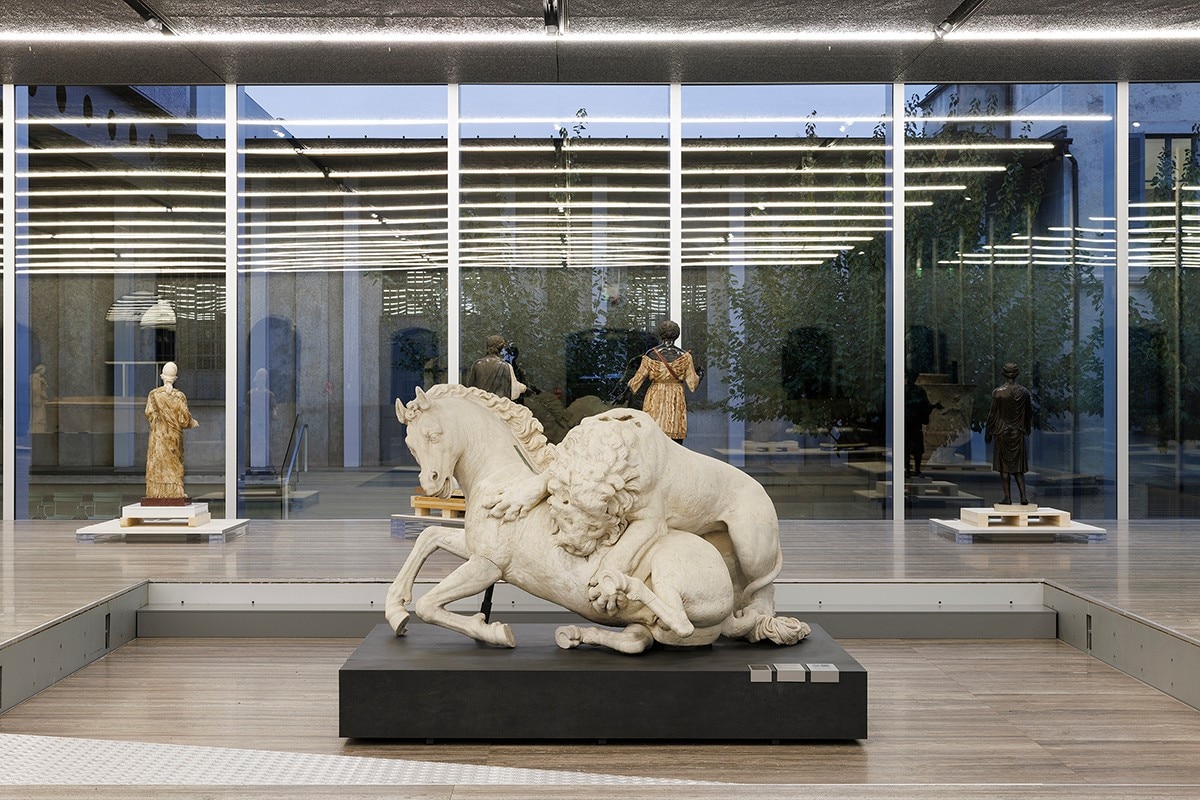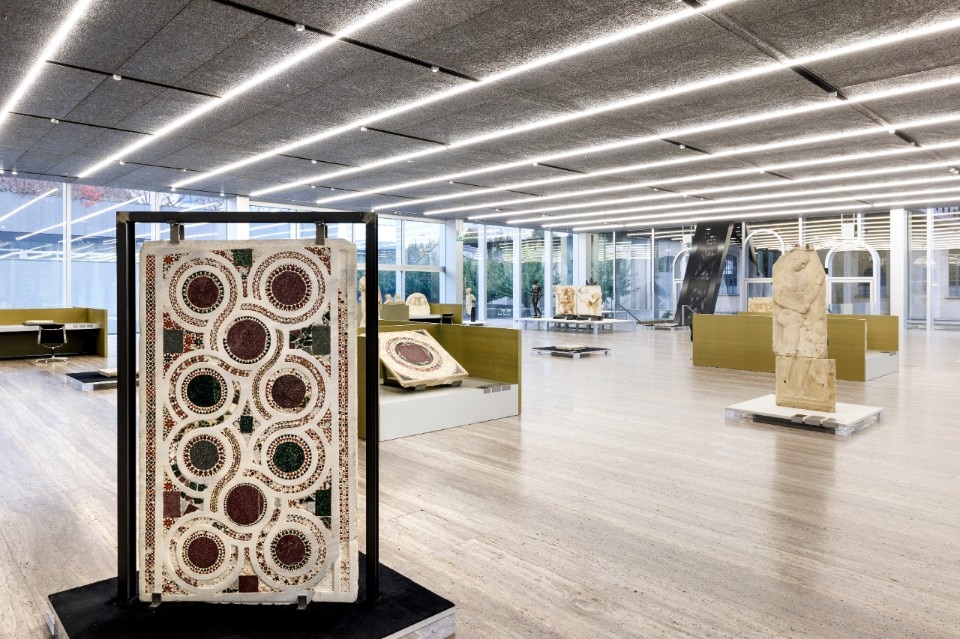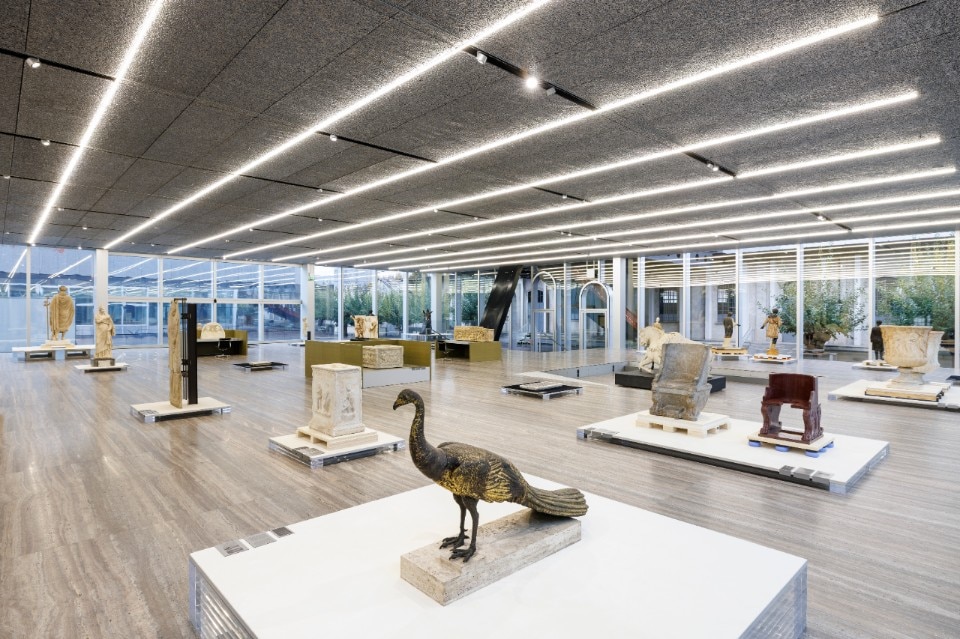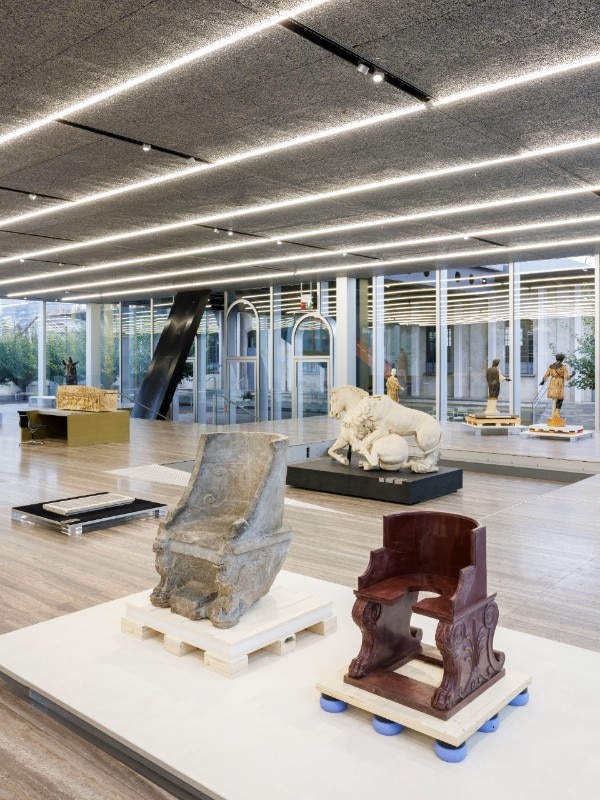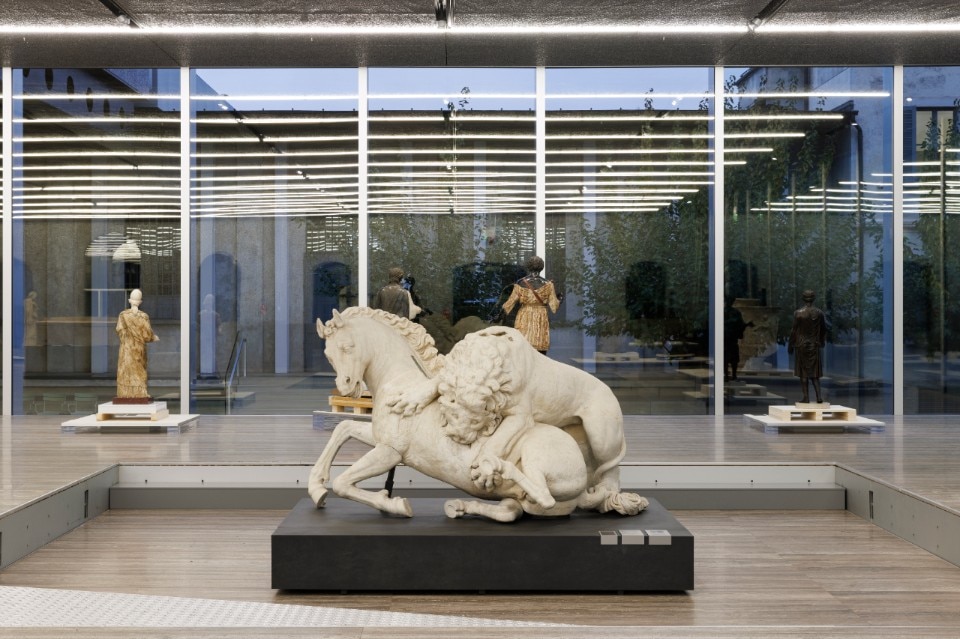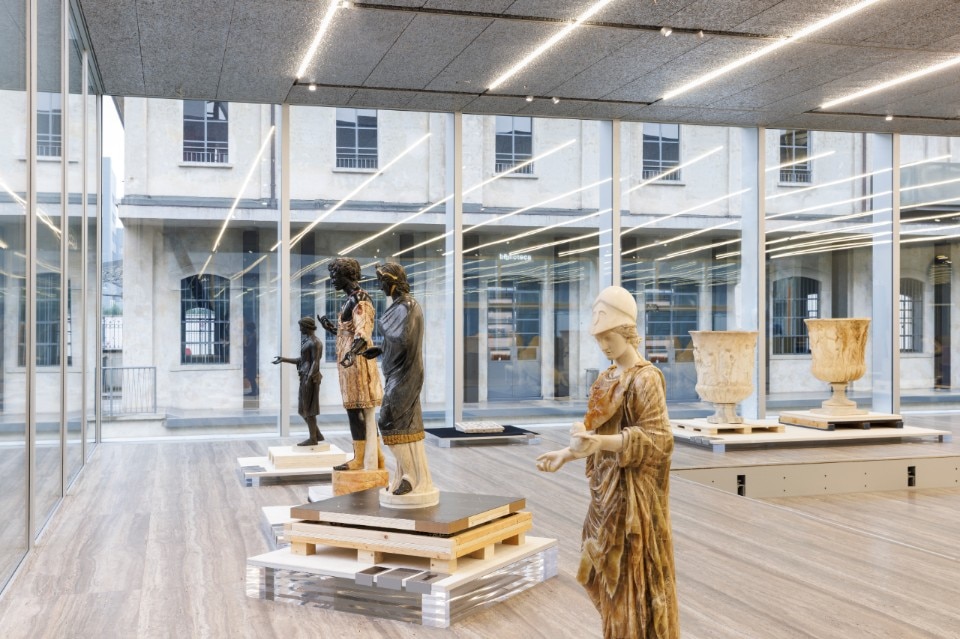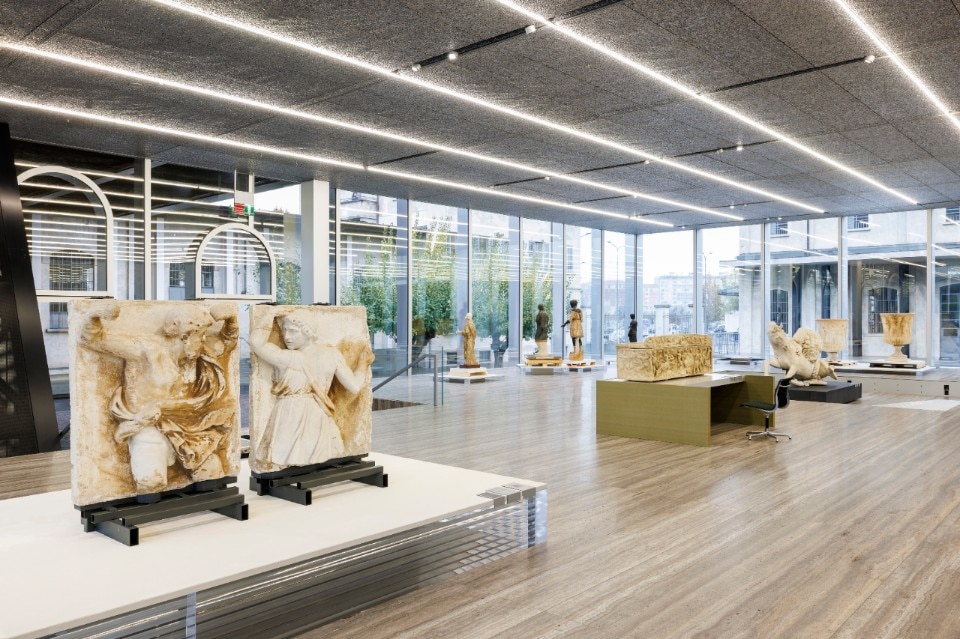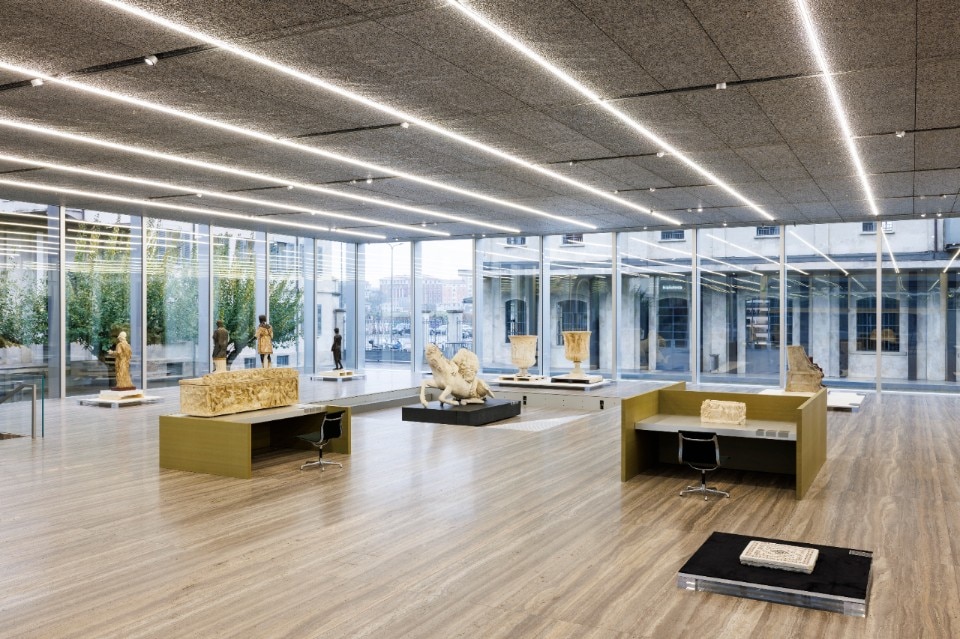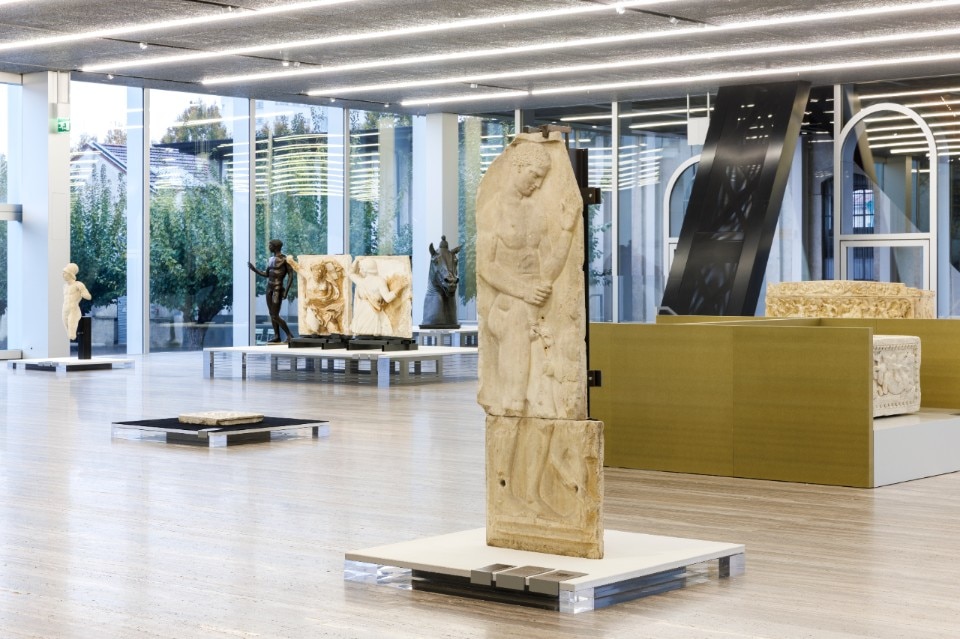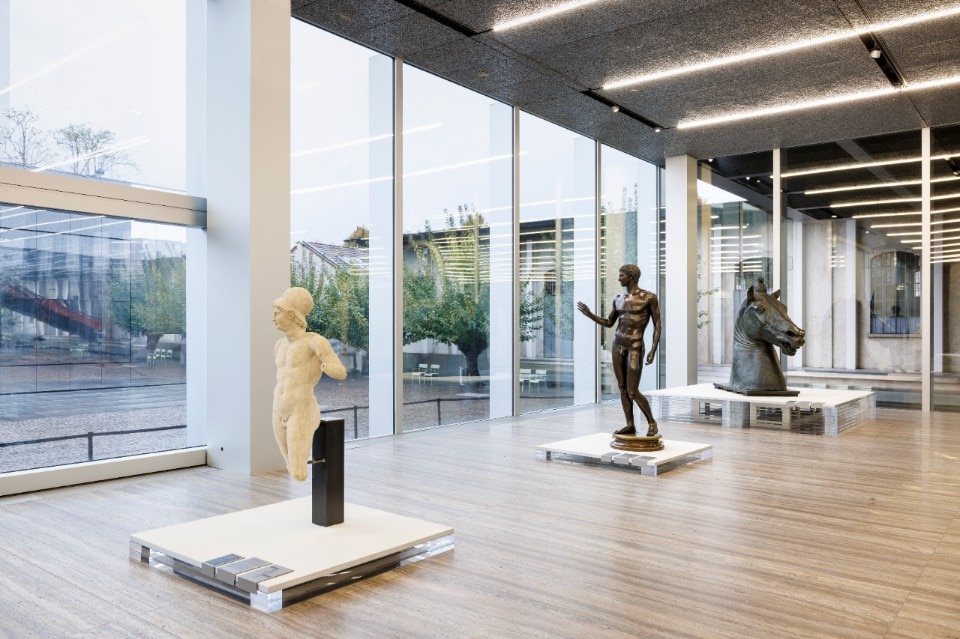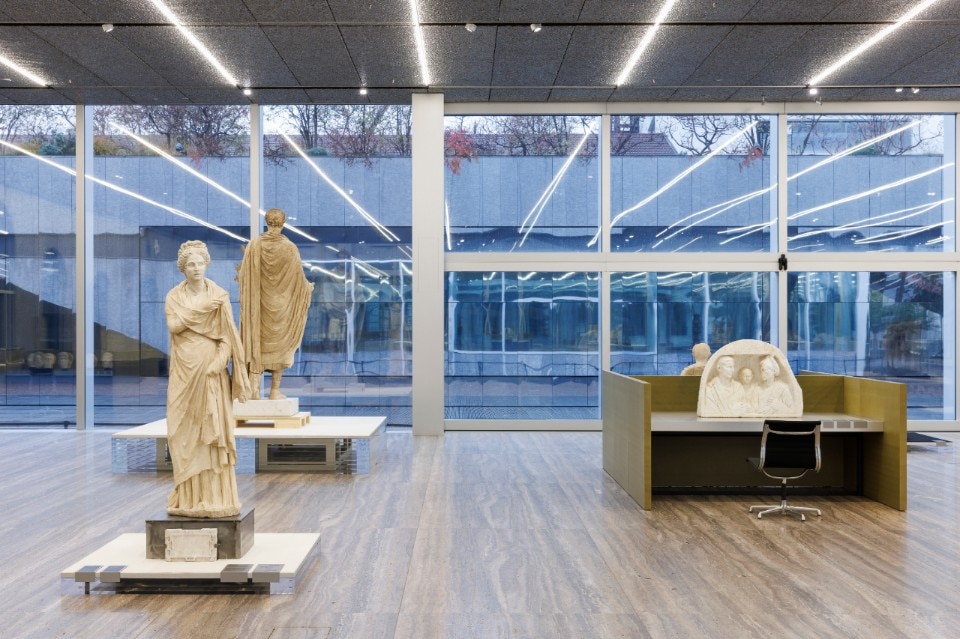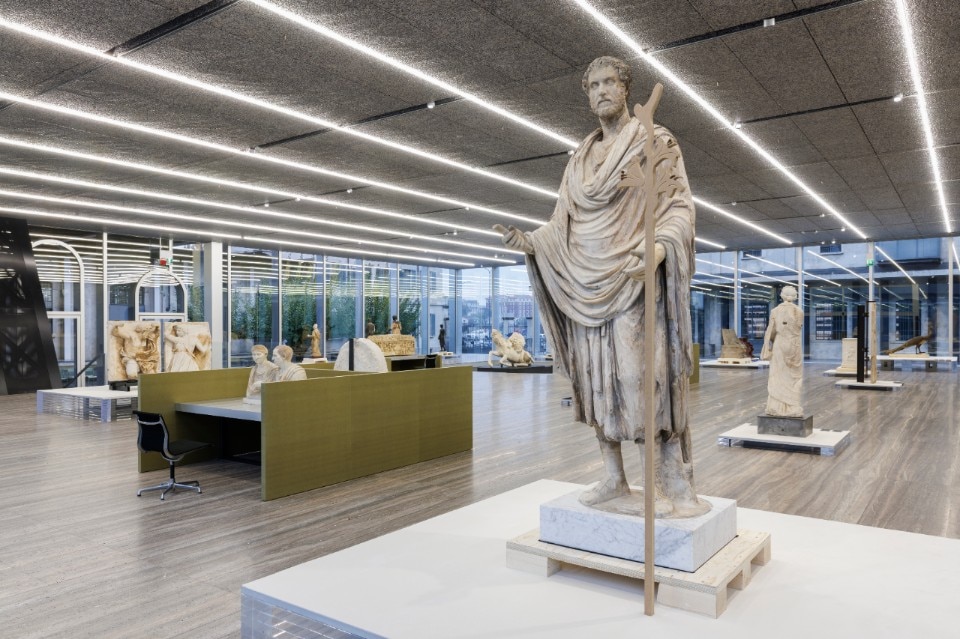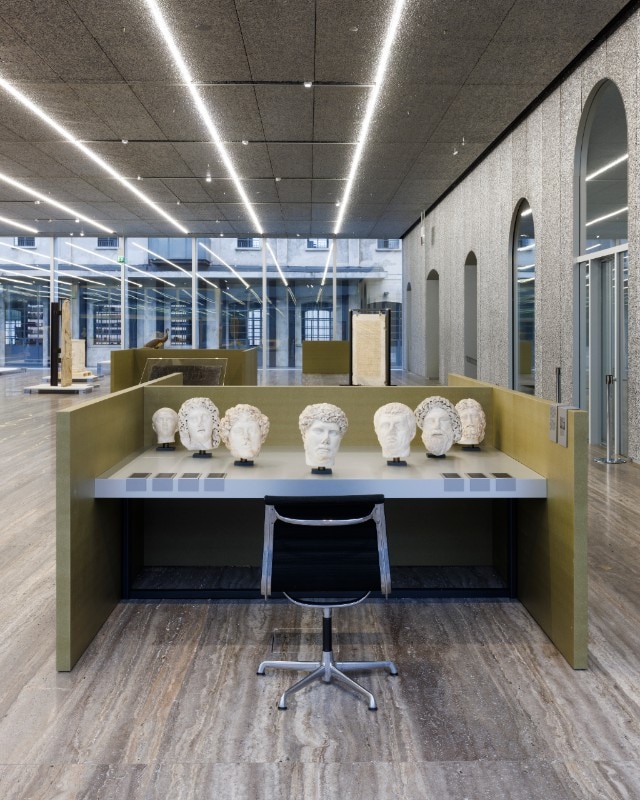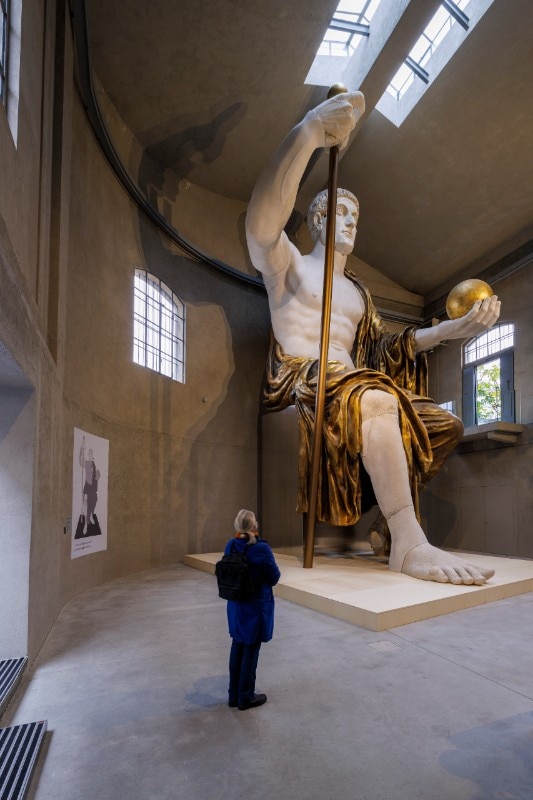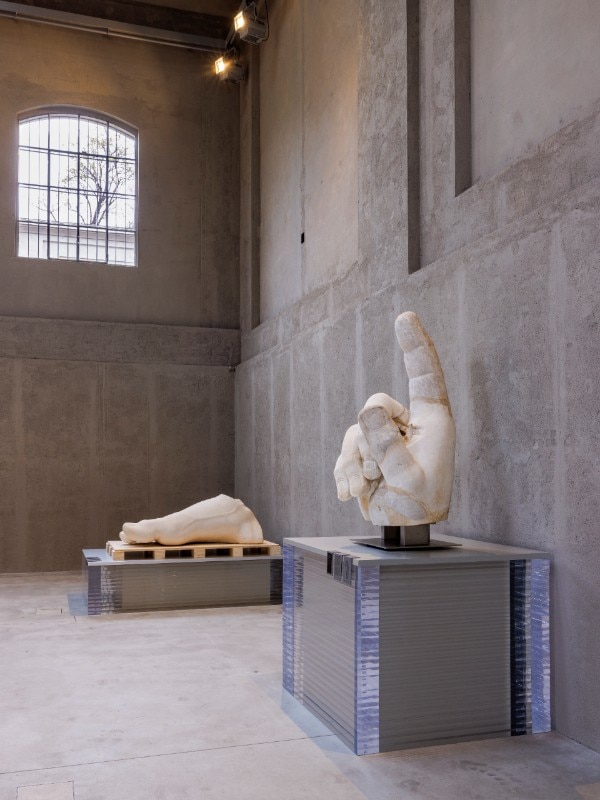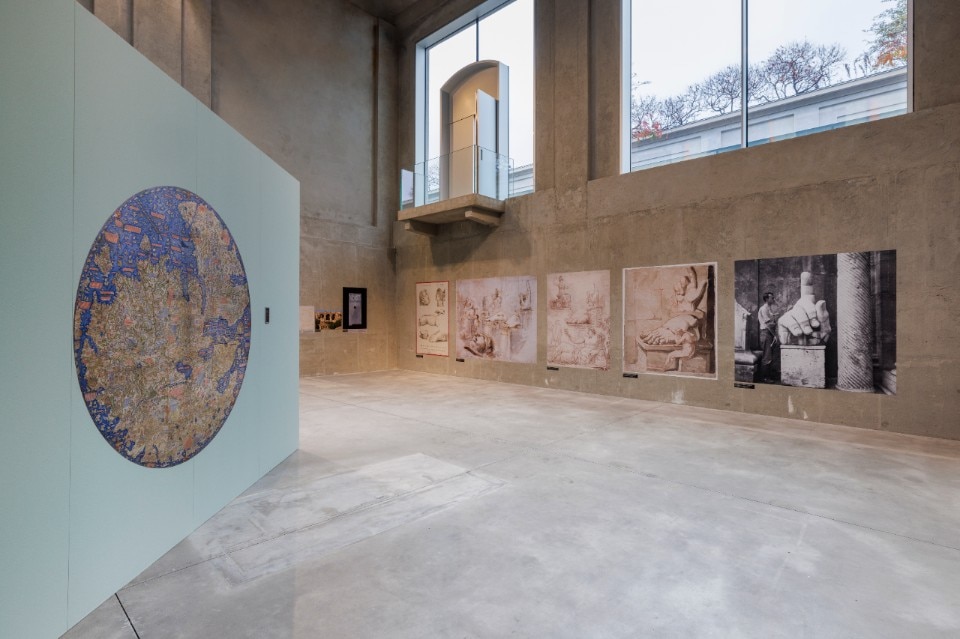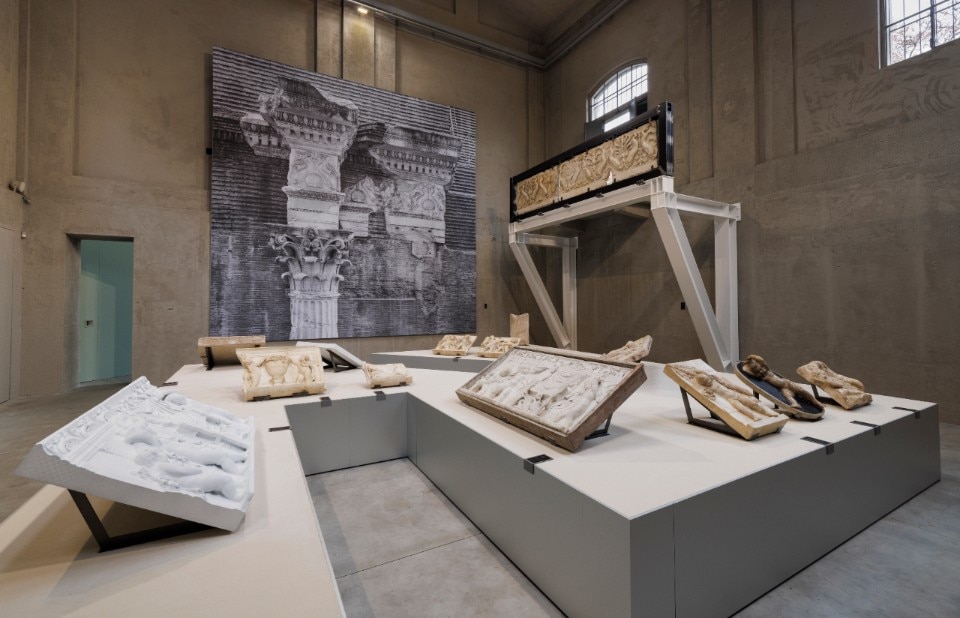Recycling Beauty is the third chapter of Fondazione Prada’s research on the contemporaneity of the classical, following Serial Classic, which inaugurated its new Milan venue in 2015, and Portable Classic, displayed the same year in Venice.
While the first two exhibitions were dedicated to illustrating the similarities of the role of copies and reproductions between classical and contemporary art, Recycling Beauty focuses instead on one of the most well-known phenomena in our relationship with the ancient: the reuse of materials from the past in new contexts of place and meaning.
The first two exhibitions showcased kitsch and repetition as phenomena typical of classical art – conceived, the latter, as a tool for the dissemination of costume and communication, including mass political one, using completely similar ways to those of the standardization of contemporary products and clothing. In the new exhibition we move on to illustrate the mechanisms of conversion and the power of misunderstanding in the reinvention of ancient materials at the time they are reused.
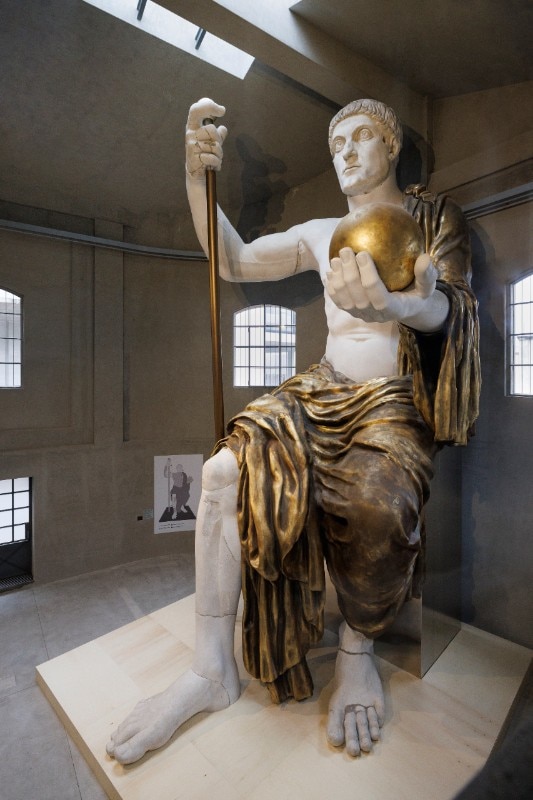
If, therefore, it is the theme of assemblage that is central to the exhibition, the exhibition display plays a particularly crucial role here. Once again conceived by OMA, thus recreating the collaboration between Rem Koolhaas and curator Salvatore Settis that had characterized the two previous exhibitions. However, Anna Anguissola’s role as co-curator, as in Serial Classic, should not be forgotten. Her influence does not seem to have been secondary in highlighting on this occasion certain aspects of the everyday life of the ancient, peculiar to her archaeological research.
The exhibition is divided into two different moments, one taking place in the glazed Podium in the center of the Fondazione spaces, the other in the large Cisterna near the tower, each of which follows a different assemblage standard.
In the Cisterna, a linear type of exhibition is proposed, telling the story of an object and its reconstruction by employing OMA’s typical sober, diagrammatic style. The object is made physically present only at the end of the process, revealing all its spectacular bigness. Indeed, this is the first full-scale reconstruction of the famous colossal statue of Constantine, originally placed in the Basilica of Maxentius, one of the most important works of Roman art. The reconstruction – which in some ways responds to the unrealized famous postmodern project of Carlo Aymonino’s colossus in front of the Flavian Amphitheater – allows to offer a unique stage to the result of a long process of research around the fragments of the colossus carried out independently by the Capitoline Museums (where they are preserved).
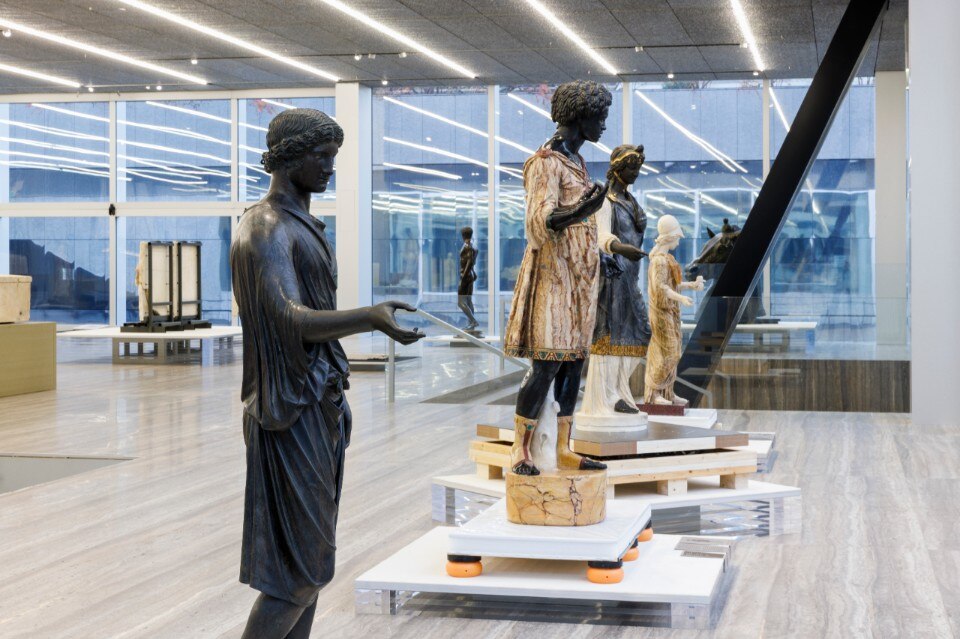
Research showing how the first Christian emperor reappropriated classical forms, transforming a statue of Jupiter into that of himself, through a process in which, while changing the predominant religion, the idea of the majesty of power as a force that crushes the beholder is not changed.
In the Podium, on the other hand, a synchronic assemblage is carried out in which all elements appear simultaneously to the visitor’s gaze and whose purpose is to compare many different biographies, organized by coherent semantic sets. At the showcase in the background there are statues that reuse ancient fragments to create a modern composition.
In the corner away from the entrance, instead, there are objects that until recently were considered ancient even if they are not (i.e., the Horse head by Donatello considered for centuries to be a work of Roman times) and so on.
The sequential arrangement of the objets ré-trouvés, is achieved through subtle alignments of meaning and certain recurring graphics in the Fondazione space, such as the three dominant shades of gold, black, and silver. Statues of animals in the three corners of the room (a peacock, a lion, a horse), the emphasis on a ferocious beast in the pit in the center of the room (the most scenic work in the exhibition, so much so that it also appears on the catalog cover), slabs and craters originally placed outdoors, and the low gilded cabinets where one can sit and sink into a l’art pour l’art in the works, constitute the installation devices deployed to demonstrate that the historical cycle of these works is not concluded and remains open from time to time in a new history.
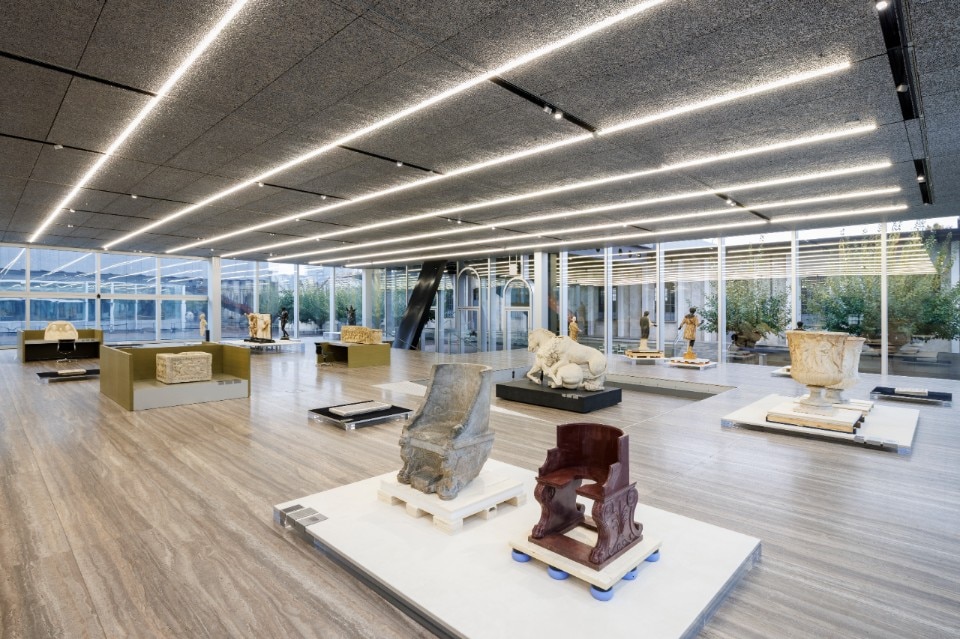
Objects whose supports are all different and that often correspond to the pallets the museums where they are exhibited had packed them with, following a conceptual operation – perhaps mindful of Ex Limbo, the exhibition curated by Rotor a decade ago on the reuse of scenographic elements made for the sets of the fashion shows designed by Prada and OMA – intended to emphasize the metaphor of their repeated travel between different places and interpretations.
At first glance, the exhibition might seem to be just an architectural promenade on the well-established and almost obvious ground for classical studies of the investigation of spoliation and reuse, constructed by selecting the most precious pieces from the rooms of prestigious Italian and European museums (MANN, Vatican Museums, etc.).
Observed carefully, Recycling Beauty instead reveals an openness to a broader research process beyond the classical, which, by triggering reflection around the thickness between reinterpretation and misinterpretation and the unstable identity of the object, invites the exploration of the vast array of reference contexts of the culture of the present, such as the Middle Ages and the nineteenth century, still almost all of which are to be recycled in the terms so seductively presented in Milan.
- Exhibition:
- Recycling Beauty
- Location:
- Fondazione Prada, Milan
- Dates:
- Until 27 February 2023


